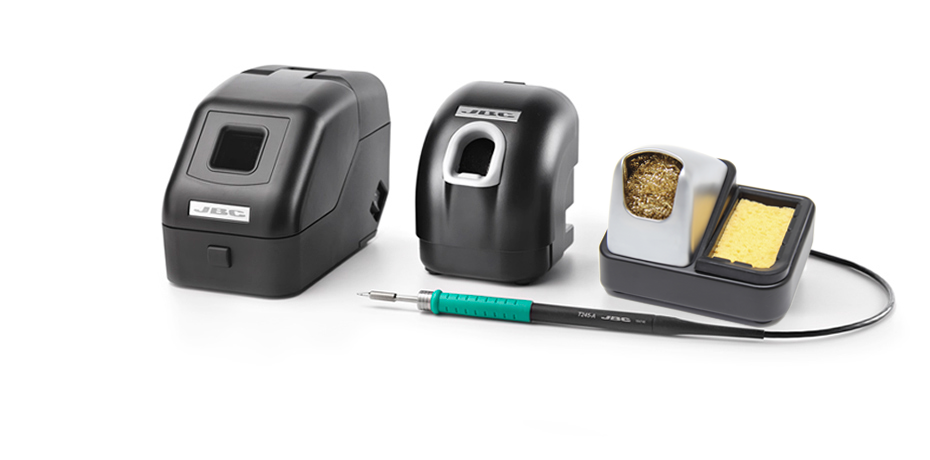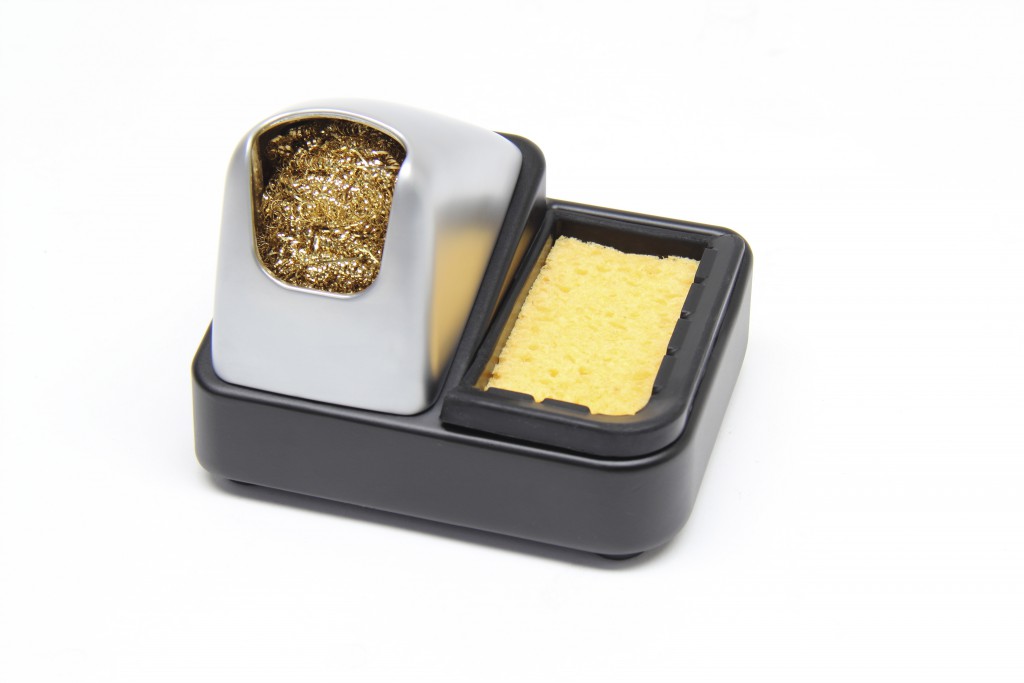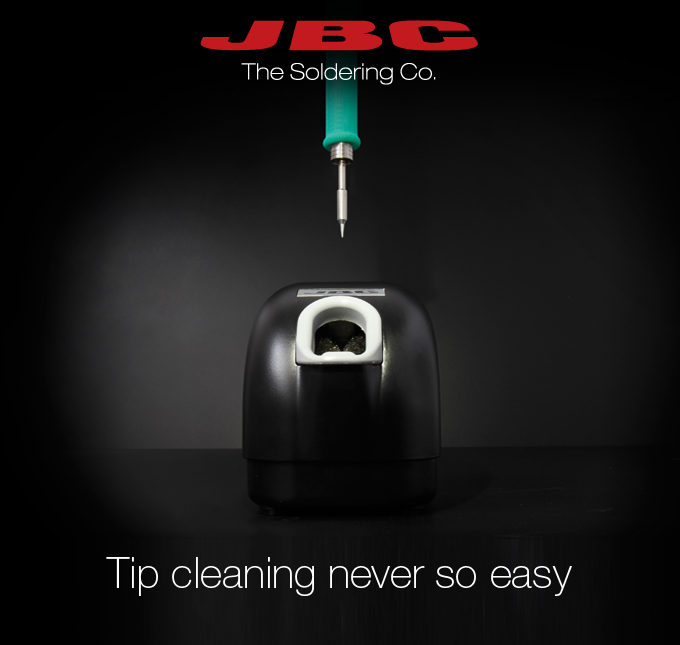With the implementation of lead-free soldering, besides the wet sponge there are alternative ways to cleaning the tip. Their use depends on how much residue needs to be removed, maintenance and the technology of the soldering method.
The following guidelines will help you choose the most convenient method for cleaning your tips. Read on!

The most convenient method for cleaning your tips
A damp (not swamped) sponge is an efficient cleaning method if it is kept clean. It should be changed periodically and only used with deionised water. A disadvantage is that tip temperature partially decreases during contact with the sponge especially when using older generations of soldering systems, where the iron does not have a very fast thermal response and takes several seconds to recover the working temperature. Another disadvantage is that the long lasting plating of the tip can be damaged due to thermal shock.
The brass wool is an alternative to the sponge, needs less maintenance but does not decrease tip temperature, which is why it is better suited to sometools with low thermal response. A disadvantage to the brass wool is that it retains residue which in turn may fall on the PCBs if there is no splashguard. The brass wool holder should be heavy enough to avoid having to steady it when being used.
The metal brush is a more aggressive cleaning method, but when used gently, it is thorough enough and causes the least damage.
The tip tinner / cleaner is a chemical alternative to cleaning and retinning the tip at the same time. It should be used when the other methods fail and a more active cleaning method is needed.
What’s the best type of wool?
Brass wool: Although less aggressive than the Inox Wool, it is easily subject to deterioration. It can cause metal particles and fibers to contaminate the working area. Some people refuse to use Brass Wool for this reason.
Brass wool was first employed in industry many years ago and it became the standard for many operators.
Inox Wool: More aggressive than Brass wool, it requires more c are when being used. It is most effective when used less aggressively and so minimizes abrasions – Less Is Better. As well as being more effective, Inox is much more durable than Brass. It is more flexible and less fragile, and as a result, reduces the amount of particles and contamination of the work area. In tests we found it very resistant to breakage and it contained less than 10 times the amount of broken particles than in Brass wool.
are when being used. It is most effective when used less aggressively and so minimizes abrasions – Less Is Better. As well as being more effective, Inox is much more durable than Brass. It is more flexible and less fragile, and as a result, reduces the amount of particles and contamination of the work area. In tests we found it very resistant to breakage and it contained less than 10 times the amount of broken particles than in Brass wool.
Why you should use automatic tip cleaners?
In an effort to make your work easier and faster JBC has developed an automatic solution for cleaning the tips in only 1 second!
JBC’s Senior Tip Cleaner CLMB and Junior Tip Cleaner CLMS mean you save time and increase production effortlessly. These dry cleaning systems require less effort and increase your production. You can save up to 5 seconds with each cleaning and they are very easy to use.
The CLMB will automatically clean the tip in just one second. A photoelectric sensor detects the tip when you introduce it into the opening and then activates the brushes. With the CLMS model, the brushes will run in either a continuous mode or when you press the button on the lower side of the opening.
These innovative tip cleaners ensure the least damage to the tip. Moreover, JBC has recently launched a new version of its automatic tip cleaner CLMB with non-metal brushes that provides a gentler cleaning.
Both JBC automatic systems feature a wide splashguard which avoids tin splashing and maintain the work bench free of Foreign Object Debris (FOD) so you can work more safely.



I usually use brass wool but i guess I should try to use an automatic tip cleaners from now on. Thanks for sharing!
Thanks for your comment! Automatic tip cleaners are tools that really worth the investment. You can ask for a free trial period here: http://www.jbctools.com/ask-demo.html. Once you have tried them… there’s no going back! 🙂